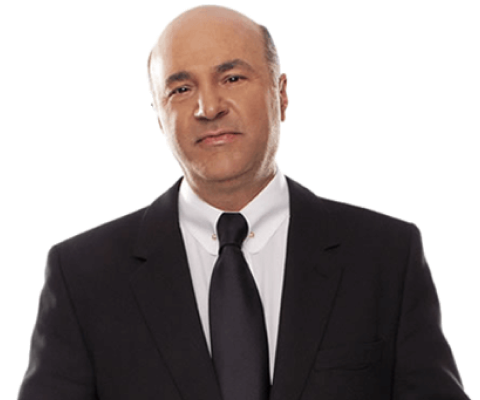10 Things You Must Know Before Applying For A Trademark
10 Things to Know Before You Apply for a Trademark
#1 It's going to take a long time.
#2 Trademarks are registered on a per-country basis.
#3 You must start with a proper trademark search.
#4 Trademarks only cover the goods and services listed in your application.
#5 Be prepared to pay the government fees.
#6 Only U.S. residents may file U.S. trademarks without an attorney.
#7 You must be licensed as a trademark agent to file trademarks in Canada.
#8 Over 68% of trademark applications are initially refused.
#9 Cheap online filing services only file your application—they do nothing else.
#10 Traditional law firms will charge by the hour to respond to office actions.
#1: A TRADEMARK APPLICATION IS GOING TO TAKE A LONG TIME
The trademarking process varies from country to country, but if you expect your trademark to register in a matter of hours, days, or weeks—you’re in for a real surprise. The whole thing from filing to registration typically takes at least a year. Sometimes two or even longer in some cases. If you think you might need to have a registered trademark in, let's say, six months, you are already at least six months behind. From our experience, if you urgently need to get your brand trademarked, it’s usually already too late.
If you see an ad that promises you trademark registration in 15 minutes, know they’re lying to you. Chances are, they won't even FILE your trademark in 15 minutes, let alone get it registered. Oh, and if they do file your trademark in 15 minutes, I can only imagine how poorly it would reflect your actual business needs. But that's a different story. You may want to get our 7 Red Flags of Cheap Trademarking Services book for that. I'll also put the link in the description.
#2 TRADEMARKS ARE REGISTERED ON A PER-COUNTRY BASIS.
There is no such thing as a global trademark. If you want to protect your brand around the world, you will need to trademark your brand in all world countries. There are two notable exceptions. First, you can file a single trademark application that will cover you in all 27 countries of the European Union. Second, you can file what’s called a Madrid Application to file your trademark application in up to 90 jurisdictions at the same time. However, unlike the EU trademarks, you will not get a single registration that covers a bunch of countries. In the best-case scenario, you will end up with a bunch of separate registrations for all the countries you listed in your Madrid application.
Unfortunately, this also means you will need to deal with separate office actions and objections in each country. Beyond that, you will need to file your trademarks in every country where you want to protect your brand. Having said that, very few businesses need to trademark their brands in so many countries. I mean, unless you're a billion-dollar corporation, you probably have more important things to invest in than protecting your brand in, let's say, Ethiopia or Tajikistan.
Our rule of thumb is: File in your home country first. Then look at countries where you think your brand might generate over $30,000 in annual revenue in the next few years. Then look at countries where you plan on spending over $5,000 a year on marketing or operations. Finally, if you manufacture your products overseas, trademark your brand in those countries as well. Otherwise, someone else could do it to prevent you from exporting your own products to your main markets.
#3 YOU MUST START WITH A PROPER TRADEMARK SEARCH
Filing a trademark application with no comprehensive trademark search is a waste of time and money. Yes, you can do your own "trademark search" using one of the free online trademark search engines out there. Let's say you ran such a search and didn't find anything suspicious. Great! But how do you know you've searched for the RIGHT things and if you're interpreting the results CORRECTLY?
To see why this is not a good idea, run a search for "Microsoft Software Solutions" in your favorite trademark database. If you use one of those free trademark search engines on commercial websites, they will tell you the name is available (because Microsoft hadn't bothered to trademark "Micro-Soft Software Solutions") and offer to file it for you for a couple of hundred bucks. Guess how long it will be until you hear back from Microsoft's attorneys if you relied on these results? On the other hand, if you use official trademark search databases on government websites, they'll spit out thousands and thousands of results at you. Good luck going through them all!
We all know you couldn't trademark Micro-Soft Software Solutions. But how are you actually going to know for sure if your ACTUAL BRAND is unique enough to be worth building and developing? Seriously…Are you just going to file your mark hoping it goes through—and just deal with it if it doesn’t?
If you neglect to do a proper trademark search, you may end up spending years of your life and tens of thousands of dollars to get the Trademarks Office to approve your application. And the worst part—you may end up not getting it anyway. Make sure you get someone who knows what they’re doing to run a comprehensive trademark search and share with you their registrability opinion. By the way, if you use Trademark Factory®, we will run all necessary searches and give you our opinion on whether your brand is trademarkable in 2 business days or less. If everything is good to go, we'll just start working on your trademark application, ASAP. If we spot a problem with your first choice, you can get a refund or have us do additional searches for alternatives, at no extra cost to you.
#4 TRADEMARKS ONLY COVER THE GOODS AND SERVICES LISTED IN YOUR APPLICATION
Newsflash: trademarks don’t give you a monopoly over a certain word, phrase, or image by themselves. What a trademark gives you is a monopoly over those words, images, and phrases in association with specific products and services that you offer to your target market. The way trademark law works is that if you come up with a brilliant name for your software company, it doesn't mean that somebody else shouldn’t be allowed to use the same name to sell bananas.
When you file your trademark application, you need to list all goods and services in association with which you want to claim your ownership of the brand. In other words, what goods and services are you planning to offer to the market under your brand? When creating the list, you will need to break down your products and services into one of the 45 categories called “classes.” If you want to learn more about classes, we have a separate video about it. Make sure you watch it. When you build your list of goods and services, be guided by these three considerations:
#1 In the U.S., your trademark application will not proceed to registration until you can show the use of your brand for all the goods and services listed in your application. On top of it, in all countries, even if your application registers, anyone can get your registration canceled for goods and services that you have not used for 3+ years. This means don’t file your trademark for goods and services you know you won’t use.
#2. You will not be able to add more goods and services to your application once it’s filed. You would need to file a brand new trademark application to cover such additional goods and services. This means thinking hard about what products and services you are likely to bring to the market under your brand in the next 3 or so years.
#3 Each additional class will cost you extra in government fees. This means if you actually need to protect your brand for those goods and services, paying a few extra hundred dollars shouldn’t stop you. But know that these fees do add up, so don’t copy-paste an entire dictionary into your trademark application just for fun.
#5: BE PREPARED TO PAY THE GOVERNMENT FEES
Like death and taxes, there is no escaping from paying the government fees when you file your trademark application. Even if you do everything yourself, the government will take its cut. On average, expect to pay a few hundred dollars for each class of goods and services you include in your trademark application. You are welcome to use our free calculator to determine how much you would pay to the government. You can find the link on our website, or once again, you can just get the free ebook and have all the links handy.
#6: ONLY U.S. RESIDENTS MAY FILE U.S. TRADEMARKS WITHOUT AN ATTORNEY
Unless you have proper legal training, filing your own trademarks is like pulling your own teeth. The statistics are clear: 81% of trademarks filed by self-represented applicants receive at least one refusal from the Trademarks Office. In many cases, the application has such fatal flaws it cannot be saved, no matter how much time or money you throw at fixing it later. But at least, filing your own trademark application is an option—even if not the most prudent one. With one notable exception.
If you (or your company) are not a U.S. resident but you want to protect your brand for the American market, you can’t file your own U.S. trademark. You must use a U.S.-licensed attorney to file and handle your trademark application before the USPTO. There is just no way around it. Trademark Factory® works with the most experienced U.S. trademark attorneys to ensure the best chances for your trademarks’ success.
#7 YOU MUST BE LICENSED AS A TRADEMARK AGENT TO FILE TRADEMARKS IN CANADA
Canada has a weird dual licensing regime. There are lawyers who are licensed to practice law. And there are trademark agents who are licensed to file and prosecute trademarks. The peculiar thing about it is that Canadian lawyers who are not trademark agents (and only a very small subset of them carry both licenses) are not authorized to handle trademark registration for their clients.
So if you are looking for professional help to get your trademark registered in Canada, don’t expect your local lawyer to do it for you. Unless you are filing your trademark yourself (again, bad idea), you must use the services of a registered Canadian trademark agent. I used to carry both licenses until I relinquished my lawyer license in 2015 to focus solely on trademarks. So now, I'm just a registered trademark agent here in Canada.
#8 OVER 68% OF TRADEMARK APPLICATIONS ARE INITIALLY REFUSED
Several months after you file your trademark application, the Trademarks Office will reject it in 68% of the cases (or 81% for self-represented applicants). The reasons for the result will be stated in a letter called an “office action.” These are the four most common reasons your trademark application will be rejected:
1. Your trademark is too similar to a previously filed or registered trademark. That’s why you must do a proper trademark search before you file your application.
2. The wording or classification of your goods and services do not meet the requirements.
3. Your specimens of use do not show proper use of your products and services.
4. Your trademark is too descriptive (in other words, you are trying to trademark a term commonly used in your industry to refer to your products or services or any of their features or characteristics). Make sure you receive a proper registration opinion if you’re not sure whether your trademark is distinctive enough to be registrable.
You will have 6 months to respond to the office action and convince the Trademarks Office to approve your mark. Except in the most straightforward cases, you will need professional help to overcome the objections. If you don’t respond to the satisfaction of the Trademarks Office, your trademark application will be denied, putting the future of your brand at great risk.
#9 CHEAP ONLINE FILING SERVICES ONLY FILE YOUR APPLICATION—THEY DO NOTHING ELSE
This is one of my biggest pet peeves...Online trademark filing services create a false sense of security by focusing on the filing of your trademark for a very low price. The “too good to be true” low price of most online trademark filing services means you are paying them to simply take whatever information you give them through their web forms and file it on your behalf. Your trademark application will not have an attorney of record or a registered trademark agent handling your case. In other words, you are representing yourself.
Quick reminder: You may not file U.S. trademarks without an attorney unless you are a U.S. resident. You might be able to hit the jackpot if the Trademarks Office approves and allows your trademark application without an office action. But this only happens for 19% of trademark applications coming from unrepresented brand owners. You will need to find a trademark attorney to deal with the Trademarks Office if you’re part of the 81%. Fixing a poorly drafted application is usually more expensive than getting it right in the first place. But the biggest problem is often you can’t fix a poorly drafted application—no matter how much money you throw at it later.
This way you save some money filing your trademark with the cheapest option available—and at the end of the day, lose all this money, time, and, ultimately, your brand. If you just want to file a trademark and see if it sticks, then, by all means, use these $49, $99, $199 services—or even do it yourself! Because it might stick. But if you truly care about your brand, if you see the potential behind your brand’s future, get it done right. For more details about what’s wrong with the cheap solutions, get our free book 7 Red Flags of Cheap Trademarking Services.
#10 TRADITIONAL LAW FIRMS WILL CHARGE BY THE HOUR TO RESPOND TO OFFICE ACTIONS
Traditional trademark attorneys, trademark agents, and law firms are usually good at what they do. The problem is, they run a pay-per-hour business. While some of them charge a flat fee for problem-free trademark applications, they start charging by the hour when the Trademarks Office issues an office action. Since nobody can predict how many office actions the Trademarks Office will issue or how many hours it will take attorneys to respond to such office actions, the clients never know how much the entire process will cost until it’s over.
It means there’s no way for you to allocate a budget. Can be 5k, can be 10k, or even more in complex trademarking cases. Oh, and by the way, if your trademark is eventually refused, do not expect these fees to be returned to you. You’re paying for lawyers’ time, not for results. This is a viable option for business owners who are serious about their brands but don’t mind paying by the hour for responses to office actions and don’t need a money-back guarantee in case their trademark is refused.
Contact Trademark Factory Today
With Trademark Factory®, you are getting the best trademark professionals, agents, and attorneys to work on your trademarks for one fixed fee with a 100% money-back guarantee. We are the only firm in the world that offers trademarking services with a guaranteed result for a guaranteed budget. If you're going for the smartest way to trademark your brand, book your free consultation call with us today!












